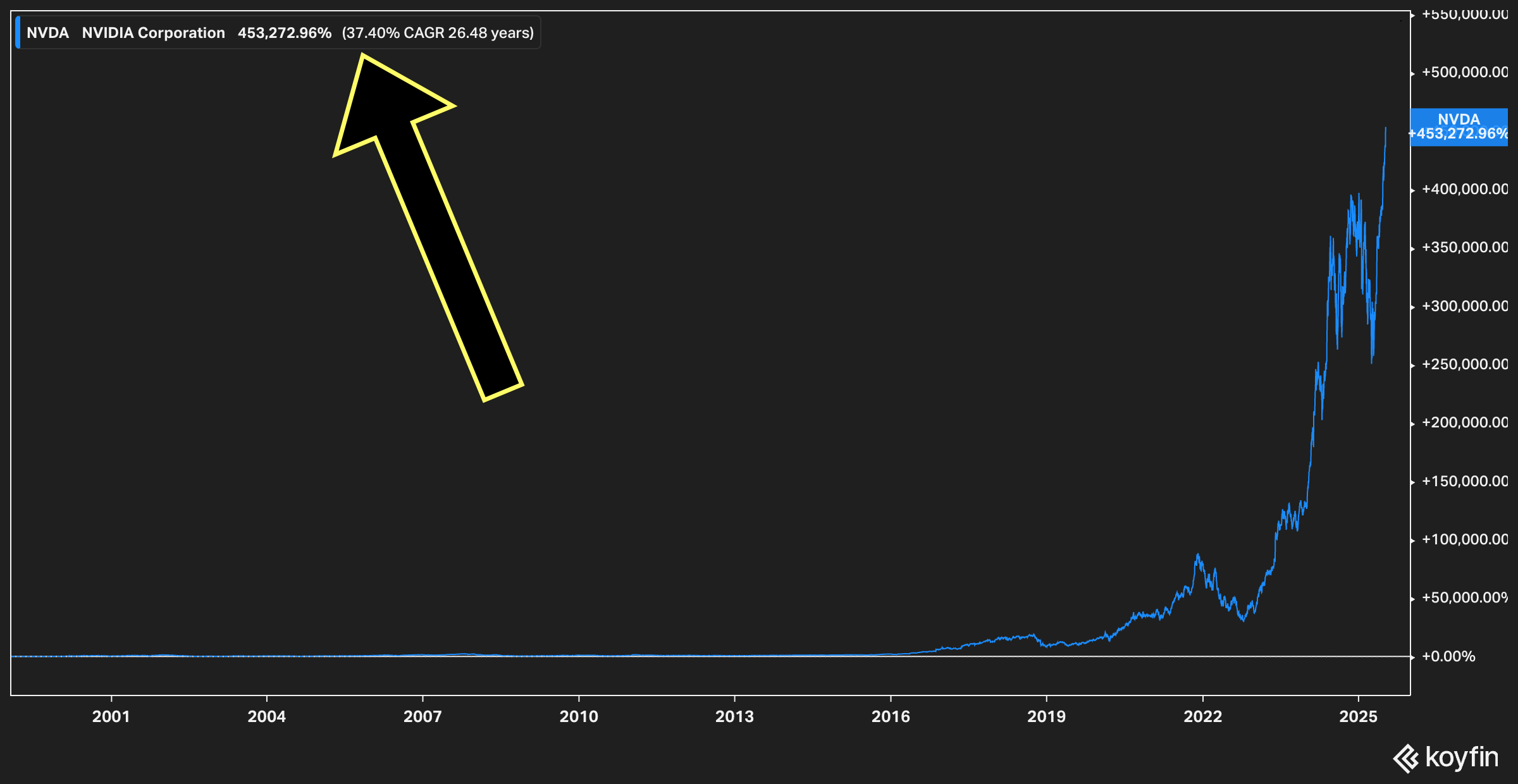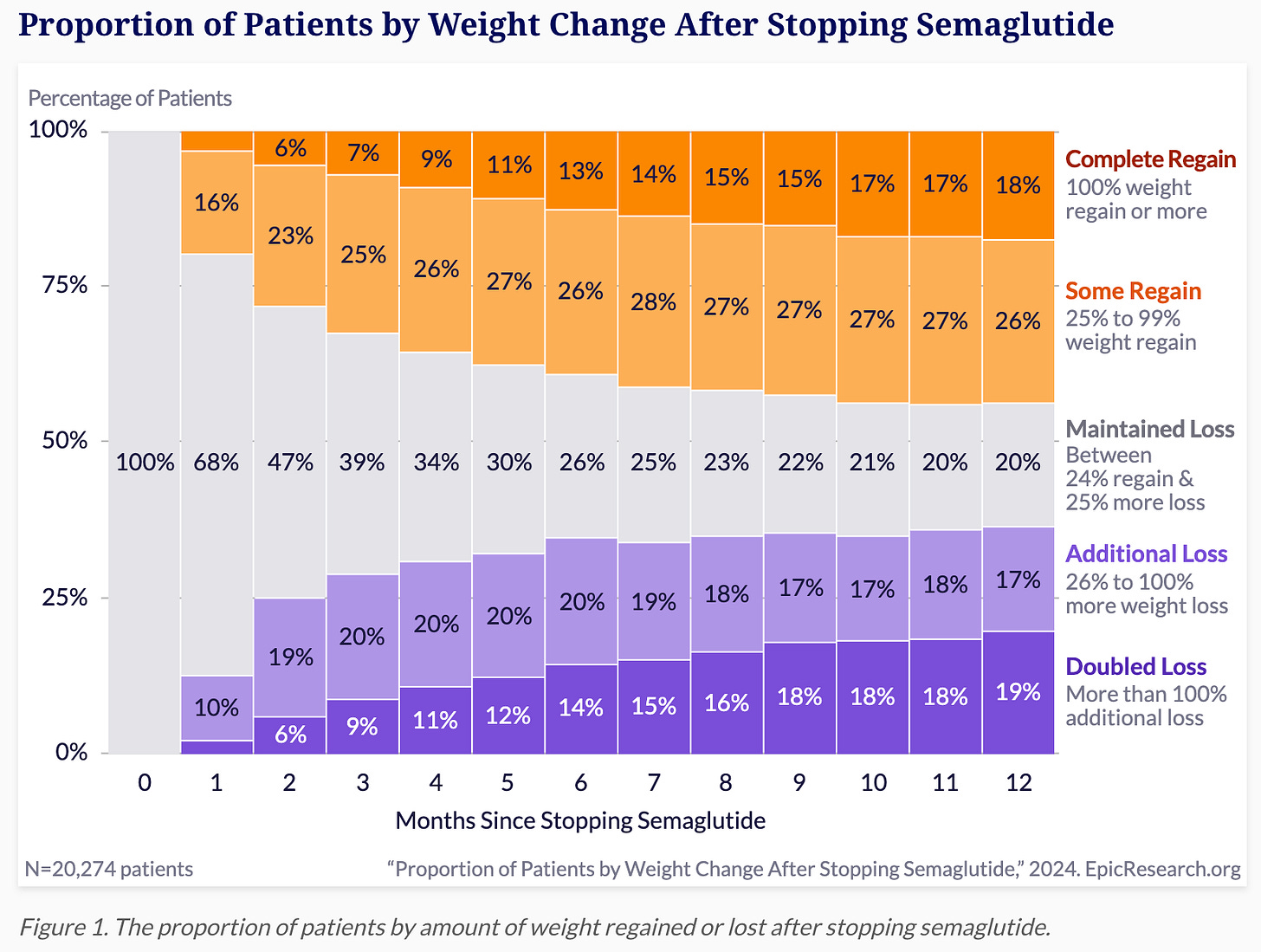577: Nvidia + China, Jensen's Cash Pipeline, AMD, Huawei, Meta’s 5GW Hyperion Cluster, U.S. DoD, Europe’s War on A/C Kills, GLP-1, Grok 4 & 5, Guitars, and Apple TV+
"we’re reversing the reversal"
Sustained outrage makes you stupid.
—Kevin Kelly
👁️🧠💥 Until last week, I had no idea what an ocular migraine was.
I’m writing this so that if, like me, you get your first one, you’ll at least know what it is and avoid spiraling into the anxiety of wondering if you’re having a stroke or your retina is detaching 😬
Here’s what happened:
I was driving, stuck in traffic during rush hour, with my wife and two boys in the car. All of a sudden, I see a flash on the right. I figured the sun had bounced off a nearby window and hit my eyes.
But the bright after-image didn’t fade. It stuck around. Slowly morphing into a multi-colored, spiky blob.
To give you a better idea, I made the image above by compositing a few different mockups I found (because I couldn’t find one that looked quite like what I saw).
I was starting to freak out. My brain was racing through the possibilities, trying to run a self-diagnosis…
Do I have a detached retina? Do I call an eye doctor? What if they don’t answer, it’s Friday evening… Do I go to the hospital? Am I having a stroke? Driving in traffic with my family in the car is the worst place for this to happen!
I think I was getting close to having a mini panic attack, which didn’t help.
As I was trying to figure it out, I closed one eye, then the other, and realized that I saw the weird thing IN BOTH EYES. 👀
That ruled out a detached retina. What are the odds that both go at the same time?
So that meant it was neurological, which… wasn’t exactly reassuring.
Panic panic panic 😰
Thankfully, we were almost at our destination. Once the car was parked, I reclined the seat, closed my eyes, calmed myself down, and started talking to ChatGPT in voice mode. 🤖💬
I described my symptoms: what I saw, that it was in both eyes, the spiky jagged rainbow shape, etc.
The first thing it suggested was ‘ocular migraine’ (sometimes called ‘retinal migraine’).
I get migraines a few times a year, and they *suck*, but I never had any visual symptoms. And I didn’t have any pain at all, so migraine probably wouldn’t have crossed my mind.
The AI confirmed that some people experience ocular migraines without any headache at all.
Within just the few minutes that this took, the visual distortions began to fade. I asked how long these things usually last: 20–30 minutes.
I then Googled mockup images of ocular migraines, and they matched hat I saw. Then I looked up descriptions of symptoms on a few reliable medical sources and it all lined up.
Within a few more minutes, the light-blob was gone. I had a small headache later that night, which was probably related, but it wasn’t too bad.
This experience would have been a lot worse without AI.
The healthcare system here is anything but fast. Without something like ChatGPT to help me talk it through and figure it out, I may have spent a lot longer wondering what was going on and stressing out.
So if this ever happens to you, I hope you’ll remember ol’ Liberty’s tale and it’ll make things less scary.
It would’ve been 10x easier to live through if I’d simply known what it was from the start.
💚 🥃 🙏☺️ If you’re a free sub, I hope you’ll decide to become a paid supporter.
You’ll unlock access to paid editions, the private Discord, and get invited to the next supporter-only Zoom Q&As with me.
If you get just one good idea 💡 per year, it’ll more than pay for itself. If it makes you curious about new things, that’s priceless.
Can't upgrade right now? Share something you enjoyed here with someone who might like it too. Drop a screenshot and a link in your group chat! 💬
🏦 💰 Liberty Capital 💳 💴
🤖→🇨🇳 Nvidia to Start Selling H20 GPUs in China Again (oh, and AMD too, yeah)
Quick aside before we begin: Since its IPO 26.5 years ago, Nvidia’s stock has had a compound annual growth rate of 37.4%. Not bad!
I’m starting to get whiplash.
It was less than two months ago that Nvidia announced a MASSIVE $5.5 BILLION inventory write-off because the U.S. government had changed its mind about allowing the sale of the crippled H20 GPUs to China. That had to be one of the biggest inventory charges ever, if not the biggest one (there are many biggest write-offs, but they’re for intangibles).
Now, we’re reversing the reversal and bringing up back to where we started after a full 360-degree spin around:
Huang also provided an update to customers, noting that NVIDIA is filing applications to sell the NVIDIA H20 GPU again. The U.S. government has assured NVIDIA that licenses will be granted, and NVIDIA hopes to start deliveries soon
I sure hope they kept all those already-built H20s in a warehouse somewhere, and ready to go. Who knows when the U.S. government will change its mind again, or enter a new phase of the trade war with China and yank GPU exports licenses again as leverage…
Let’s not forget little brother AMD:
AMD received similar assurances from the US Commerce Department and plans to restart shipments of its MI308 chips to China once licenses for sales are approved, the company said in a statement Tuesday.
American GPUs flowing back to China (legally) will have all kinds of ripple effects on the ecosystem, from the vast semiconductor supply chain, to Chinese big tech and AI labs, to the dynamics of Nvidia/CUDA vs various software frameworks attempting to disintermediate them.
And Huawei, of course.
The Chinese government will no doubt keep backing homegrown GPU efforts, especially now that the U.S. has played that card and shown them how dependent they are (this is the mirror image of what China did with rare earth minerals and magnets).
BUT
Even with the government pushing for compute independence, making Nvidia chips available will no doubt take a big bite out of Huawei's sales and slow the adoption of its software and hardware stacks.
Even if it’s hard for them, China’s Big Tech companies are profit-driven. If Nvidia offers them a better ROI, including because their engineers are used to working with CUDA and prefer it, they’re unlikely to voluntarily eat margin by using Huawei chips just to be patriotic. At least not while the numbers still pencil out this way.
It’s easy to imagine a future where Huawei chips are more competitive, their software ecosystem is more mature, and because of export controls, the hobbled Nvidia chips sold in China fall behind.
But we’re not there yet, especially on inference (where the H20 does relatively well, unlike for training). And because things change so fast, there’s not much point in trying to predict too many chess moves ahead.
🏗️ Meta’s 5GW Hyperion AI Cluster Will Be… Manhattan-Sized! 🏙️

Zuck wrote on Facebook (bold is mine):
For our superintelligence effort, I'm focused on building the most elite and talent-dense team in the industry. We're also going to invest hundreds of billions of dollars into compute to build superintelligence. We have the capital from our business to do this.
SemiAnalysis just reported that Meta is on track to be the first lab to bring a 1GW+ supercluster online 💪
We're actually building several multi-GW clusters. We're calling the first one Prometheus and it's coming online in '26. We're also building Hyperion, which will be able to scale up to 5GW over several years. We're building multiple more titan clusters as well. Just one of these covers a significant part of the footprint of Manhattan.
First, nice shout-out to friend-of-the-show Dylan Patel and SemiAnalysis. It’s been pretty incredible to see them turn into the AI compute Schelling point over the past couple of years 🤘
Second, I still wonder what’s going on with Yann LeCun and how much power he’ll have in the new AI org chart.
Third, Zuckerberg has clearly decided that his best chance at catching up and beating the competition was to leverage the cashflow-machine of Meta’s core business to outbid and outbuild the competition.
Here he is describing his thinking on spending heavily to recruit the top talent:
Zuck: I think in perspective, if you’re going to be spending hundreds of billions of dollars on compute and building out multiple gigawatt of clusters, then, you know, it really does make sense to compete super hard and do whatever it takes to get that, you know, 50 or 70 or whatever it is, top researchers to build your team.
I think that the physics of this is you don’t need a massive team to do this. You actually kind of want the smallest group of people who can fit the whole thing in their head. So there’s just an absolute premium for the best and most talented people.
So it kind of makes sense when you kind of think about it that, from that perspective, the amount that is being spent to recruit the people is actually still quite small compared to the overall investment and all when you talk about super intelligence.
I’ve documented and shared my thoughts about his efforts to poach some of the top talent from other AI labs, but while this human drama has made more headlines, the escalating capital expenditure plans are just as important.
I’ll be particularly interested to see where these “hundreds of billions” come from. Will they be in addition to Reality Labs R&D, or will some of that be redirected to the Superintelligence unit?).
All these investments may or may not work for Meta. AI happens to be a field where scale of infrastructure matters a great deal, and the very top talent can make a big difference (just look at the history of the field over the past 10 years to see how a few individuals came up with breakthroughs that reshaped the whole field).
So in theory, Zuck’s approach should move the needle.
But in theory, theory and practice are the same. In practice, they are not.
There are all kinds of other factors that could make this big bet not pay off — or at least, not pay off as much as desired. It’s possible that the industry dynamics could change over the next few years, as modern AI enters a new phase of its evolution. It’s possible that all the good things purchased with talent and capex are hindered by other factors, like company culture, the supergroup effect that I wrote about previously, or some bad decisions at the top.
Maybe even regulators, if they go from being an annoyance to a bigger problem for either Meta’s core business or AI more generally. 👨⚖️
As per usual, the person who benefits the most from all this on a risk-adjusted basis is Jensen Huang. When AI investment goes up and competition between the titans heats up, he’s always there to sell them his high-margin picks & shovels ⛏️🛒
Nvidia has basically built a direct pipeline from the free cash flow generation engines of most of the Big Tech players straight into its coffers 💰💰→🏦
🦅🇺🇸 U.S. Department of Defense Spreads AI Contracts to Most Major Labs 🫴💵 🤖🤖🤖🤖
Not wanting to play favorites (yet?):
OpenAI, Alphabet's Google, Anthropic and Elon Musk's AI firm xAI have won contracts of up to $200 million each, aimed at scaling up adoption of advanced AI capabilities in the U.S. Department of Defense, the government agency said on Monday.
The goal is to develop “agentic AI workflows” for various national security use cases and missions. No details yet. I suspect they’ll start with back office stuff and things that aren’t life-and-death, and will move toward more front-line applications over time as the technology proves out.
The U.S. military is a GIANT bureaucracy with a $900bn annual budget and over 1.3 million active and 800k reserve personnel. Managing all this is complex. I wouldn’t be surprised if there are a lot of processes that could be streamlined, augmented, or fully automated with AI tools.
But it’s also a slow-moving organism.
The Robert Coram biography of John Boyd has a lot of detail about how difficult it is to push through a new technology at the Pentagon. There’s an endless number of generals with their own fiefs, and they all want their say. Everything gets bogged down in politics and design-by-committee, and in the end, you get a bastardized version of the original proposal.
I don’t expect that things have changed too much since that book was written.
🇪🇺 Europe’s War on A/C Kills 🪦🪦🪦
FT:
When the late Singaporean premier Lee Kuan Yew was asked for the secret of his nation’s rapid rise from doldrums to dynamism during the second half of the 20th century, he had two answers. First: multi-ethnic tolerance in a diverse society. Second: air conditioning.
The impacts are significant, both for public health and the economy. It’s not just a frivolous luxury:
Once indoor temperatures rise above the low-twenties centigrade, or around 75 Fahrenheit, humans start to suffer. Sleep duration and quality fall rapidly when temperatures rise above 23C.
Cognitive performance fares similarly, with scores in US high school tests dipping on hot days, and the affected students suffering a lasting impact on their prospects of graduation.
The same is true of office workers’ productivity, which peaks at around 21C and rapidly deteriorates as the mercury rises. And that’s all before we get on to mortality, where death rates climb steeply once temperatures hit 30C.
If you’ve studied the importance of sleep quality, you know that messing with sleep *has* to have a wide-ranging societal impact at this scale. 🥱
Every summer when there’s a heat wave, I read about how many deaths occur in Europe. It’s always the most vulnerable who suffer most: the poor, the sick, and the elderly.
Between 2000 and 2019, an average of 83,000 western Europeans lost their lives every year as a result of extreme heat, compared with 20,000 North Americans.
Who needs A/C anyway? Just 83,000 deaths a year… 💀💀💀💀
I’m pretty sure most of the politicians and regulators who make it so hard to get A/C in European cities have comfortable apartments and summer villas, though.
It probably doesn’t help that many places in Europe have spent the past few decades trying to shut down clean nuclear power, which led to more coal being burned in places like Germany. This extra smog compounds the effects of heat of health.
At least solar power output tends to correlate very well with heat waves ☀️ but if you don’t have air conditioners to begin with, all that extra clean power doesn’t do you much good.
🧪🔬 Liberty Labs 🧬 🔭
💉 Post GLP-1 Fat Loss Maintenance 🍽️🍪
Because many people regain weight if they stop taking GLP-1-type drugs, a short-hand has developed that “you have to keep taking it forever or you regain all the weight”.
That’s not accurate. As usual, reality is more nuanced and complex:
We studied 20,274 patients who were prescribed semaglutide and successfully lost at least five pounds while on the medication. We aimed to assess their weight change one year after discontinuation. We found that 17.7% of these patients regained all the weight they had lost or even exceeded their initial weight. However, a majority (56.2%) of patients either remained around the same weight they were at when stopping the medication or continued to lose additional weight.Results were pretty similar with liraglutide. Here’s the study.
Why is A.I. this Supermassive Black Hole for Everything Else? 🤔
I realize I’ve been writing *a lot* about artificial intelligence in recent times. I was already covering it a fair amount 2-3 years ago, but now it feels like almost every story I find interesting is related to it in some way.
I think there’s a good reason for that.
It’s not about “bubble mind” or whatever. I never wrote much about crypto coins or cannabis or NFTs and they all had their moments in the sun, when they seemed to suck all of the air out of ever news cycle for a while.
I think AI *is* different.
Intelligence is the building block of pretty much everything we do. If we can produce more of it, and augment what we have, it will have an effect on EVERYTHING.
The closest parallel I can think of is the early days of the commercial internet (it had been around for a few decades before the web, but mostly as a thing for academia and researchers).
One of the things that made the Internet so fascinating to think about back then is that you could think about how it would have an impact on almost anything else you were interested in.
Retail? Media? Manufacturing? Scientific research? Music? Films? Books?
The Internet touched all this. It’s a very horizontal, general-purpose technology.
But I think that, as a technology, AI is even more general.
That’s why lately, almost anytime I feel like going down a rabbit hole on aerospace or cosmology, there’s often a big new AI-related development that grabs me first.
Either that, or it just so happens that the most interesting thing going on in a field is AI-related anyway.
I’ve been following semiconductors for a long time, but lately, AI is in the driver’s seat. I’ve been following energy for a long time too, but lately AI is driving the biggest changes too, like reopening nuclear power plants to power multi-gigawatt clusters.
Grok 4 is Barely Out, Musk Teases Grok 5 (and why Jensen wants xAI to Stay in the Race 🏁 🏎️ 🏎️ 🏎️ 🏎️)
I like big clusters, I cannot lie:
Musk said Wednesday night that in a matter of weeks, xAI would be training Grok 5 on a cluster of 100,000 Nvidia’s latest flagship chips, the GB200. We haven’t heard of any other firm setting up such a powerful cluster as quickly as xAI.
I wonder when even Musk hits the wall on raising the money needed to stay competitive in the data-center arms race. 🤔
Is he willing to sell a big chunk of his Tesla stock to finance xAI if he somehow starts having difficulty raising the money to keep up with Zuck and Google?
At some point, even deep-pocketed funds may balk at the numbers, especially if xAI can’t scale revenue up with how much it spends on talent and infrastructure.
We don’t know the details of how that is coming together, but Nvidia CEO Jensen Huang clearly has a lot of incentive to help xAI catch up to its rivals and increase the chances that more companies, rather than fewer, will remain big customers of Nvidia chips for the foreseeable future. (Source)
This is a good point.
From Jensen’s POV, the more competitive AI labs there are in the race, the better. They all spur each other to spend more on Nvidia’s SKUs.
🎨 🎭 Liberty Studio 👩🎨 🎥
🎼 Can you Hear the Difference Between a $200, $2000, $20,000, and $200,000 Guitar? 👂
I thought this was a fun little experiment.
Granted, as they discuss, it’s not only about the sound.
The feel of the guitar in the musician’s hands also matters, as do the aesthetics and story attached to the instrument, even if in an intangible way (it’s why scotch is sold in nice bottles and every distillery has a long backstory to go with it 🥃).
Watching this makes me want to try a classical guitar. They have nylon strings and wider necks, which helps with some of the fancier chords. I’ve only ever played on steel-string acoustic guitars.
I’ve got a long way to go on fingerstyle playing, though. I really suck at it 😬
🍎📺 Thoughts on Apple TV+ 🤔 (F1, Black Bird, Shrinking, , Friends & Neighbors, Severance, Ted Lasso)
I recently realized that I’ve been watching a lot of content produced by Apple.
It kind of snuck up on me, but I have to admit, they’re doing a good job of laddering up to something kind of HBO-lite (meanwhile, HBO isn’t always HBO anymore…).
On Sunday, I went to see ‘F1’ (2025, Apple) with my wife. It was on a regular screen and I wish it had been IMAX, but it was still a fun ride. It was very cinematic, and I now want to watch a ‘making of’ video to see how they were able to put cameras on the cars and film a lot of it practically. 🎥🏎️
While it had the same director, it wasn’t quite as good as ‘Top Gun: Maverick’, but very similar in many ways. Swap the planes for racecars, and Tom Cruise for Brad Pitt.
My wife and I have also been watching ‘Black Bird’ (2022, Apple), which I recommended to you last week. I’ve now seen 4 out of the 6 episodes, and I still like it a lot.
The elevator pitch is: If you liked ‘Mindhunter’ and ‘True Detective’ S1, you’ll probably enjoy this.
I’m also almost done watching the first season of ‘Shrinking’ (2023, Apple), and I’m enjoying it more than I expected. It had been a long time since I had one of these half-hour dramatic-comedies in my life, and I’m here for it.
The actors are likeable, the writing is pretty good, many of the jokes make me smile, and many of the dramatic moments give me a pinch to the heart. It’s not great art, but this is the kind of thing TV could use more of.
A few weeks ago, we also watched ‘Your Friends & Neighbors’ (2025, Apple), with John Hamm. I shared my thoughts with you, so I won’t rehash them fully, but that was also a fun ride, and I’m looking forward to S2 (though I’m not sure how they’ll pull it off).
Before that, we watched season two of ‘Severance’ (2022, Apple), which had some very high points and a lot of story momentum, even if it was a bit uneven.
A few years ago, we also really enjoyed season 1 of ‘Ted Lasso’ (2020, Apple). I think the wholesome thing came at the right time for a lot of us. Season 2 was more uneven, and I think we stopped watching in S3, but I’m still glad the show exists.
There’s another one I want to check out but haven’t yet: ‘Masters of the Air’ (2024, Apple), a mini-series about the crews of B-17 Flying Fortress bombers during WWII. Sounds right up my alley, but as always, execution matters most.







Masters of the Air on Apple Vision Pro was one of the best media experiences of my young life :) Highly recommend.
Sorry to hear about your migraine. Hopefully all's well now.
Will save you time on Masters of the Air (as a big fan of the genre whose watched Band of Brothers and the Pacific many times): it is not very good. The action scenes are good but it gets tiring. The acting is decent but feels forced at times. Did not love the show. Solid 6/10